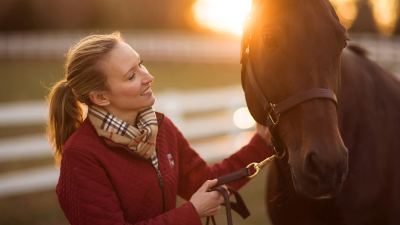12 ways to improve mental stimulation for horses

The confinement area, often called a paddock, run, turnout, corral or dry lot, is the cornerstone of horse keeping. It is where we keep our horses to avoid overgrazing of pastures. In the winter, when pastures are dormant and soils are soggy or frozen, our horses live in their confinement areas. They are also where we keep our horses to prevent them from getting overweight on pasture or if they are recovering from an injury.
However, horses in confinement must still have their primary needs met, which includes the ability to move about freely, have social contact and access to food at multiple times throughout the day. However, even with these needs being met, many confined horses develop physical or behavioral issues, such as pacing, chewing, aggression, nervousness or ulcers. That is where horse enrichment comes in.
What is equine enrichment?
Equine enrichment means providing stimulation in a horse’s environment to benefit their psychological and physical well-being. Here are a few ideas of ways to incorporate enrichment opportunities into a horse’s confinement area:
1. Confinement area shape or design:
You may be able to design (or re-shape) your confinement area to stimulate your horse. A long, narrow paddock with feeding or water stations at either end encourages interest and movement. Create a track paddock — or provide access to one during turnout. This is simply a large, long confinement area shaped like a track, that encircles a pasture or other area. The goal of a track paddock is to encourage horses to move more freely and interact with others. Alternatively, your confinement area could double as a round pen for extra exercise.
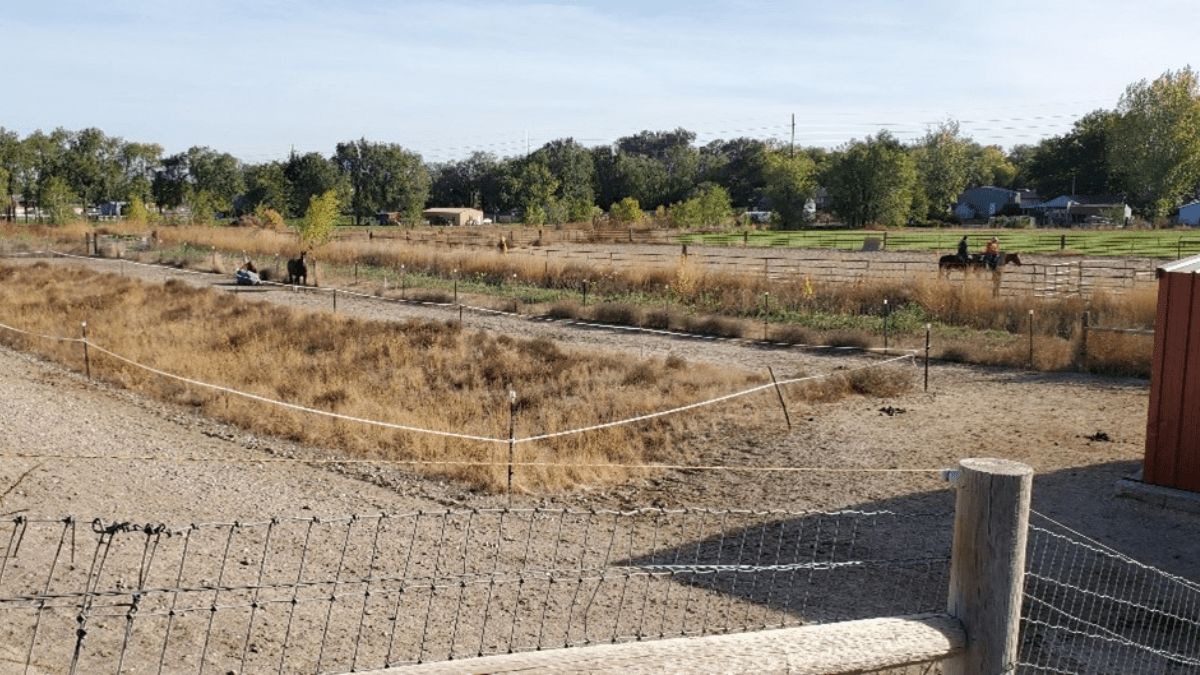
2. Location:
Locate your confinement area so your horse can interact with stimuli from the world around them. Set it up so your horse is a part of your everyday life — seeing things like kids playing, people coming and going, summertime lawnmowers and bicycles, snow shoveling in the winter, etc. This all provide mental stimulation.
3. Companionship:
Be sure your horse has equine neighbors next door so they can at least see and possibly interact through nose touching or mutual grooming.
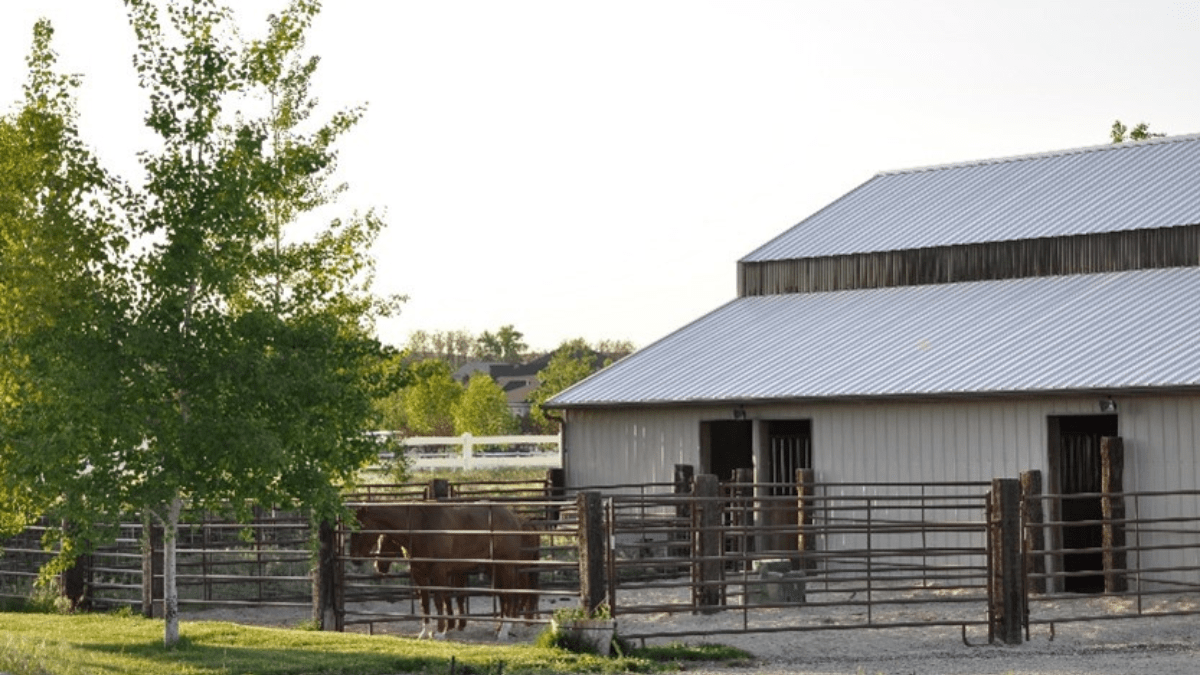
4. Rolling area:
Rolling is a natural activity that improves coat and skin condition, as well as comfort. It is also thought to increase a horse’s flexibility by stretching and engaging muscles in the back, neck and barrel. If you have room, perhaps you can create a sand pile in your horse’s paddock for this purpose. Alternatively, use a sand arena or round pen for regular turnout so they can roll there.
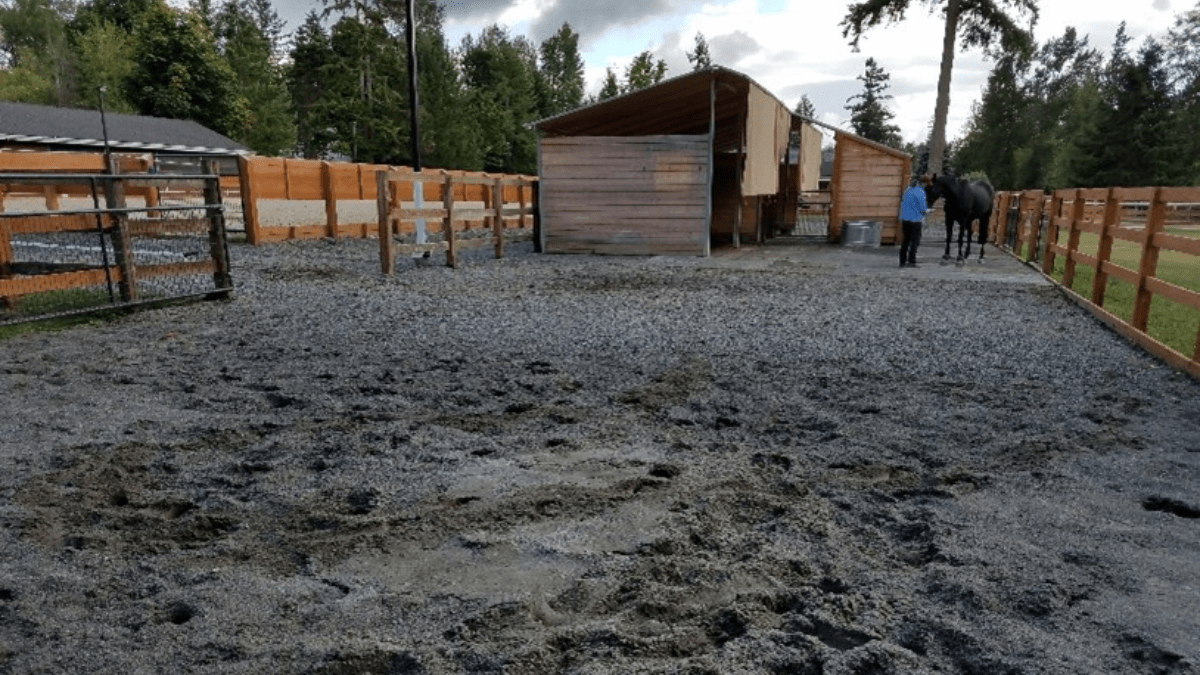
5. Food:
More frequent, smaller meals are healthier for horses and mimic their natural lifestyle. Also, try feeding in different locations or stations, so they do a bit of food seeking. You might offer different food types in different areas, such as hay cubes or low-quality hay for extra “chew time.” You should also consider a hay net or a slow feeder, which stretches eating time further and can help enrich equine feed experiences.
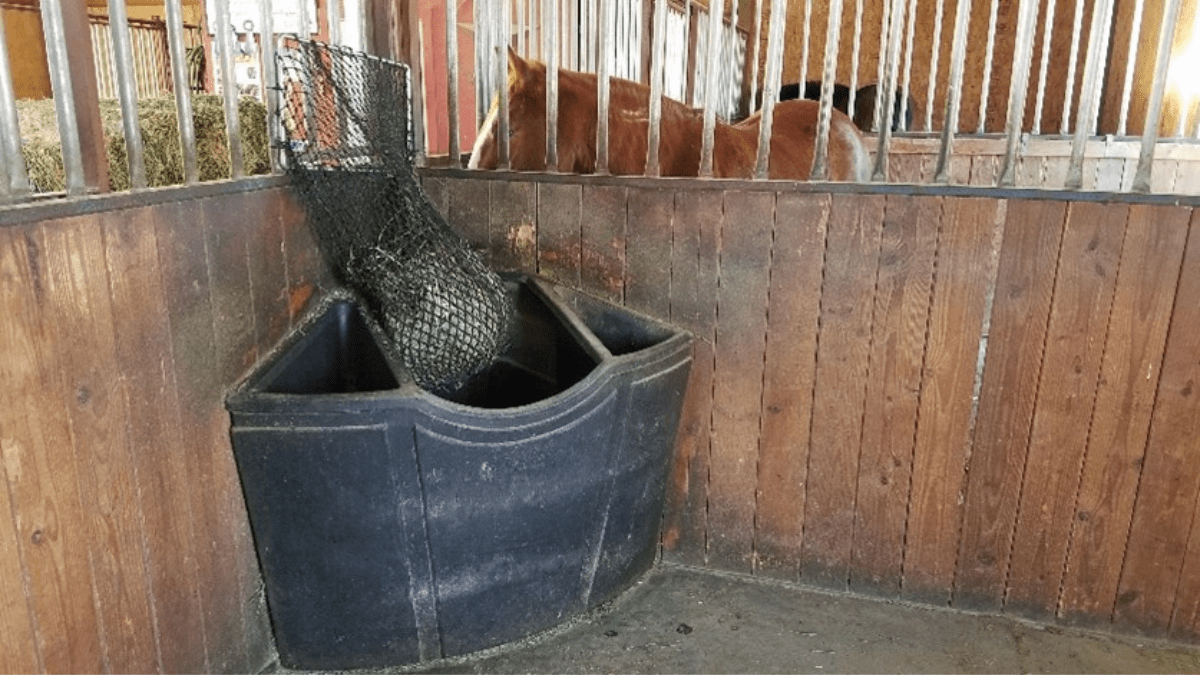
6. Browsing:
You may be able to occasionally incorporate small branches of an edible plant, such as willow, cottonwood, bamboo or blackberry vines. Weave a branch or vine into paddock fencing or incorporate a holder into their paddock for this purpose. (NOTE: Be sure to carefully research what is safe and non-toxic for your area. Several plants are poisonous to horses, such as black walnut, yew, red maple, black locust, rhododendron, laurel, oak and most fruit trees. The ASPCA has a list of plants that are toxic and non-toxic to horses. You may also consult your veterinarian if you are feeling unsure.)
7. Healthy treats:
More food-related ideas include feeding occasional treats, like watermelon, plums (without the pit), bananas (skin and all), grapes, celery or cut-up pieces of raw (orange) pumpkin. These, along with other low-sugar treats, can be fed in alternative locations to engage curiosity and food hunting behavior.
8. Horse enrichment toys:
Most horse owners have heard of a Jolly Ball®! Toys like these may help, especially for young horses. Studies show that adult horses are less motivated by toys unless they are associated with food, such as hay balls or different kinds of treat licks.
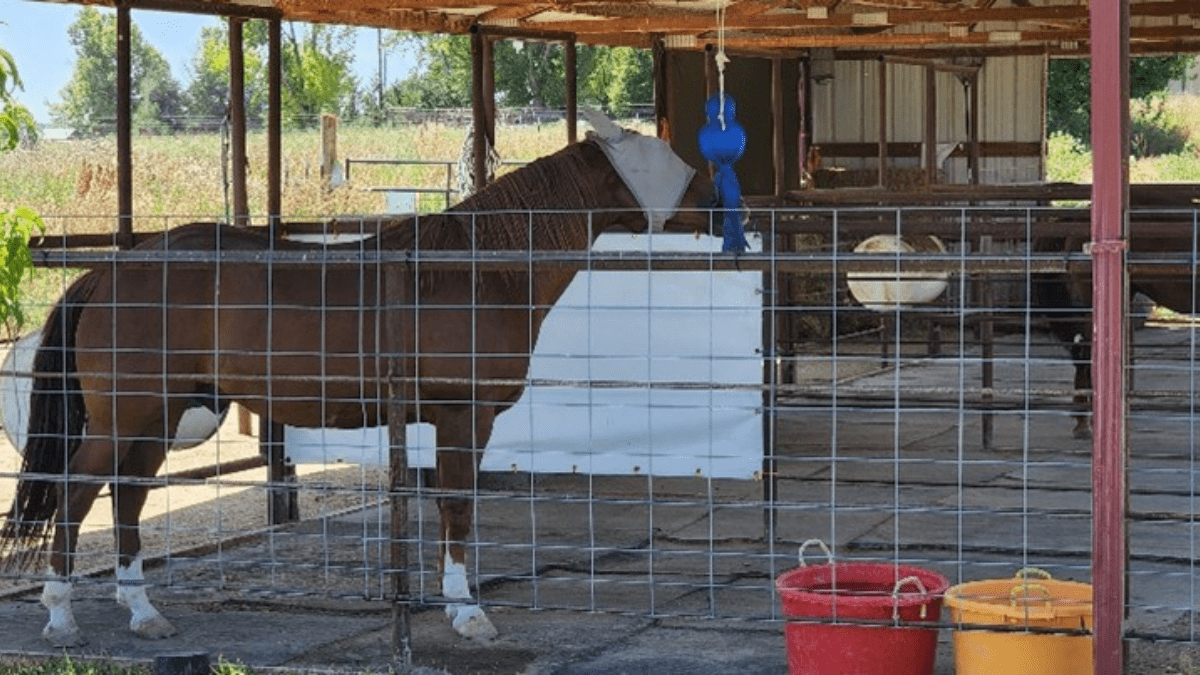
9. Scratching pads or brushes:
This could be a large nylon brush or a worn-out broom head that is safely bolted to a wall or corner. Alternatively, you may utilize a textured rubber doormat, which can be screwed to a wall.
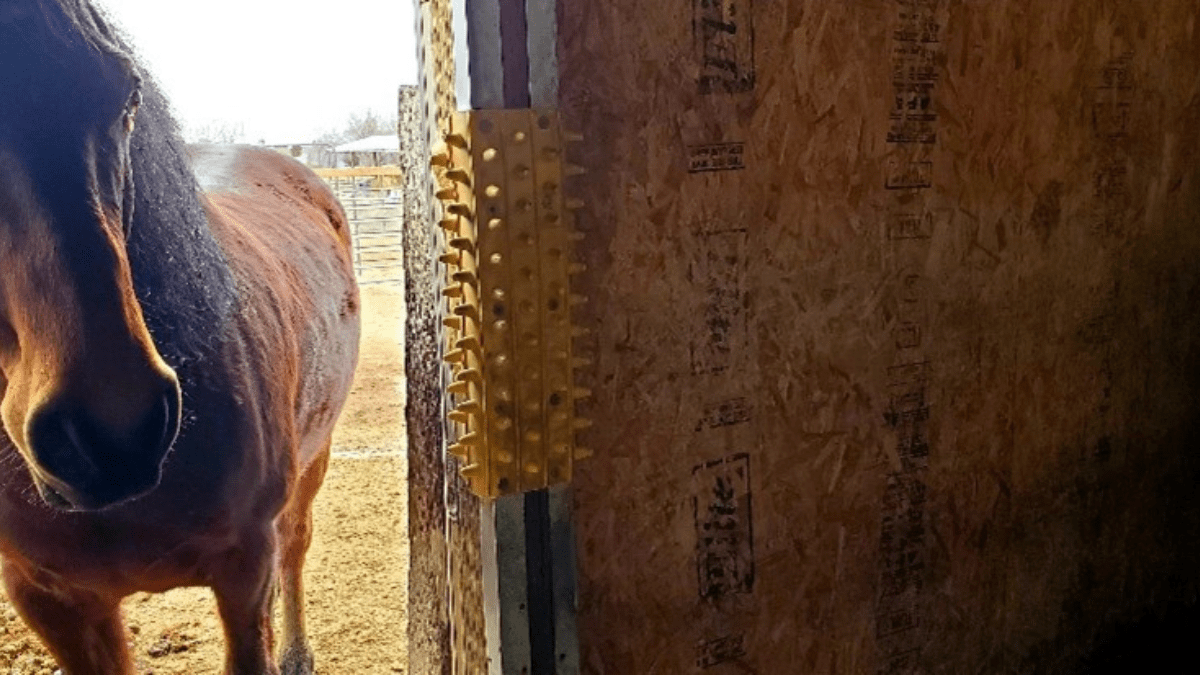
10. Friends:
You may want to consider getting a buddy for your horse. If not another horse, you might consider another animal companion for them, such as a burro or goat. A cat or dog will often befriend a horse, improving the emotional well-being of each of them.
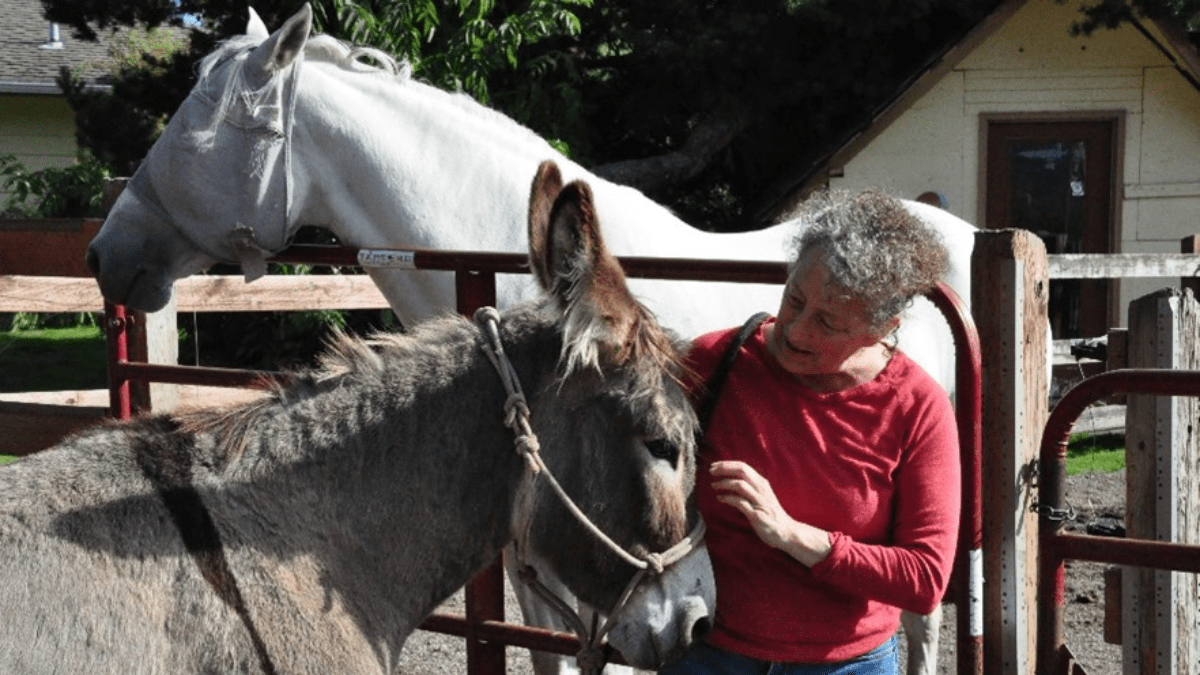
11. Turnout:
Turning your horse out, either by themselves or with other horses, gives them a chance to play, groom and interact.
12. Exercise and grooming:
Even when you cannot ride, you can still groom and practice good hoof care. As an alternative to riding, you can hand walk, lunge or do liberty work with your horse. Plan to exercise your horse a minimum of 30 minutes, three times per week.
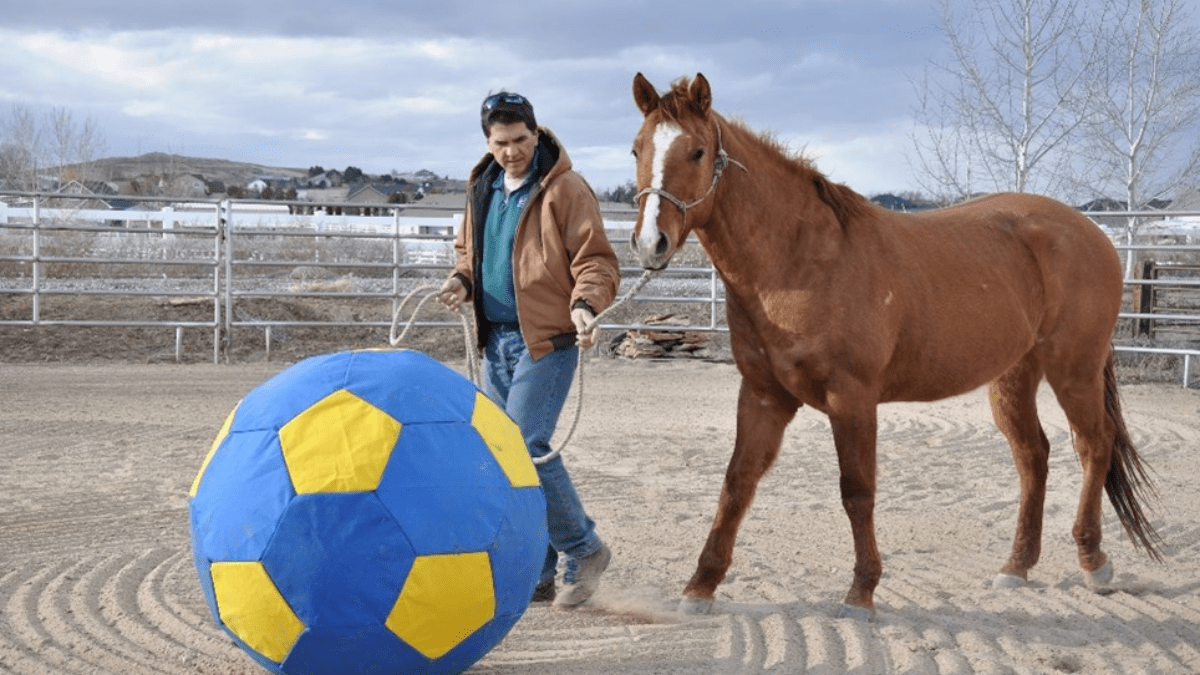
Utilizing a confinement area is an important part of horse keeping. It not only provides an opportunity for movement — it also offers a way to decrease pasture impact while monitoring horse health. However, confinement areas can be stifling for some horses because of the lack of physical and emotional stimuli.
Providing enrichment for horses does not have to be expensive and can be as simple as adding turnout time with others, providing quality hay or pasture in a more natural way, feeding a new type of feed or an occasional treat, or giving your horse a food ball or lick. It might even be as simple as scheduling a little extra one-on-one time with your horse. Think outside the box, mix things up and have fun together — and keep in mind that you are supporting both you and your horse’s emotional well-being at the same time.














